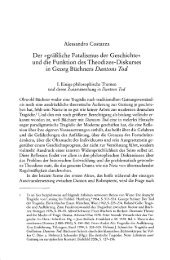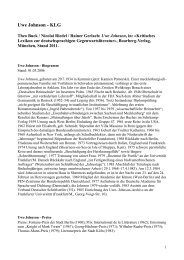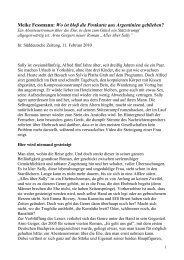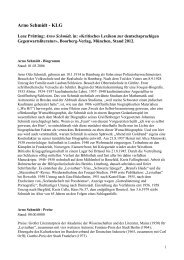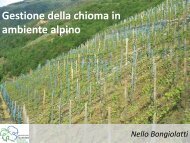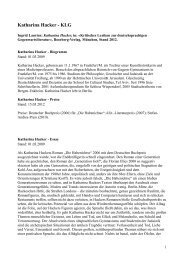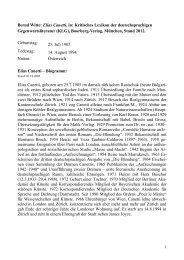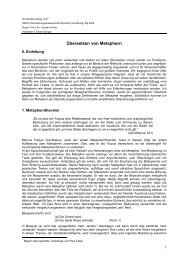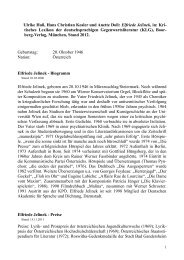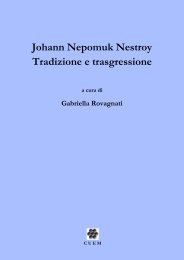Volume of Abstracts - Università degli Studi di Milano
Volume of Abstracts - Università degli Studi di Milano
Volume of Abstracts - Università degli Studi di Milano
You also want an ePaper? Increase the reach of your titles
YUMPU automatically turns print PDFs into web optimized ePapers that Google loves.
5 th Int. Workshop on Ice Caves (IWIC – V)<br />
Barzio (LC), Valsassina, Grigna and <strong>Milano</strong>, September 16 – 23, 2012<br />
<strong>Volume</strong> <strong>of</strong> <strong>Abstracts</strong><br />
winter cooling <strong>of</strong> the talus slope and the ground thermal con<strong>di</strong>tions<br />
prevailing in summertime. It may be noted that a particularly mild winter<br />
with limited freezing <strong>of</strong> the ground as in 2006/2007 causes a significant<br />
increase in ground surface temperatures during summer and fall. The<br />
growth <strong>of</strong> temperate permafrost below the porous talus slope <strong>of</strong><br />
Dreveneuse d'en Bas has been reported in two boreholes in 2004-2006.<br />
Following the mild winter 2006-2007, this frozen ground <strong>di</strong>sappeared and<br />
finally reformed in 2010 consecutively to the very cold winter 2009-2010.<br />
On the other hand the outside air temperature in summer and the<br />
thickness <strong>of</strong> snowcover contribute very modestly to changes in the thermal<br />
regime. This particular thermal behaviour significantly <strong>di</strong>ffers from<br />
conventional permafrost situations (eg. rock glacier) at high altitude. On<br />
the other hand, processes inside talus slope are very close from those<br />
which are encountered in the lower entrance zone <strong>of</strong> the dynamic ice cave.<br />
THE INFLUENCE OF THE ICE CAVES ON CLIMATE OF KARST<br />
DEPRESSIONS – CASE OF LOW ALTITUDE PERMAFROST AT<br />
SMREKOVA DRAGA, TRNOVSKI GOZD, SLOVENIA<br />
Mihevc A. 1<br />
1Karst research institute ZRC SAZU, Titov trg 2, SL-6230 Postojna, Slovenia (Mihevc@zrc-sazu.si)<br />
Perennial ice in low latitude and low altitude caves, where mean air<br />
temperature on the surface is above zero, forms due to the winter air<br />
circulation and cooling <strong>of</strong> the caves. In most cases the summer circulation<br />
is less intensive and that makes the perennial ice possible. Most ice cave<br />
stu<strong>di</strong>es are devoted to factors <strong>of</strong> cave and surface morphology that<br />
enhance formation and duration <strong>of</strong> the cave ice. Les is known the influence<br />
<strong>of</strong> the caves, especially influence <strong>of</strong> ice caves or caves in general on the<br />
topoclimate <strong>of</strong> the karst surface, especially karst depressions.<br />
Trnovski gozd is high Dinaric karst plateau in altitude mostly between 800<br />
– 1200 m a.s.l., only the central part to reach height 1400 m. Surface <strong>of</strong><br />
the plateau is <strong>di</strong>ssected by numerous large and deep dolines. Mean annual<br />
temperature on the plateau about 7º C, January (-3º C) is the coldest and<br />
July (13º C) is the warmest month. Besides several ice caves, the largest<br />
is Velika Paradana, there are numerous deep dolines where temperature<br />
inversion is important phenomena. This phenomenon was first stu<strong>di</strong>ed at<br />
Velika Paradana entrance and later in Smrekova draga.<br />
Smrekova draga is about 1 km wide, and more than 150 m deep closed<br />
depression, a large composed dolina. The dolina is well known for its<br />
extreme vegetation inversion. This phenomenon was first attributed to<br />
32




